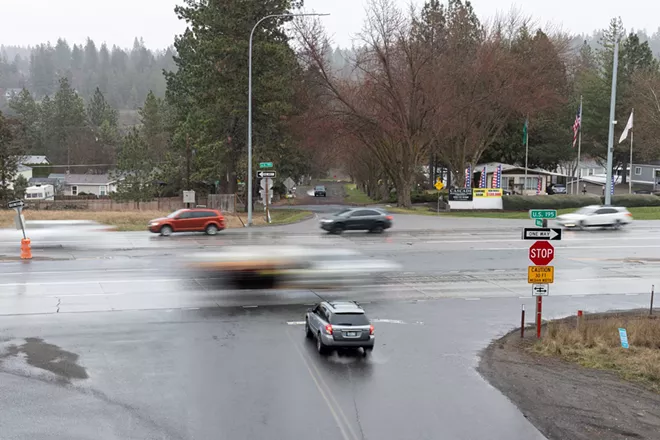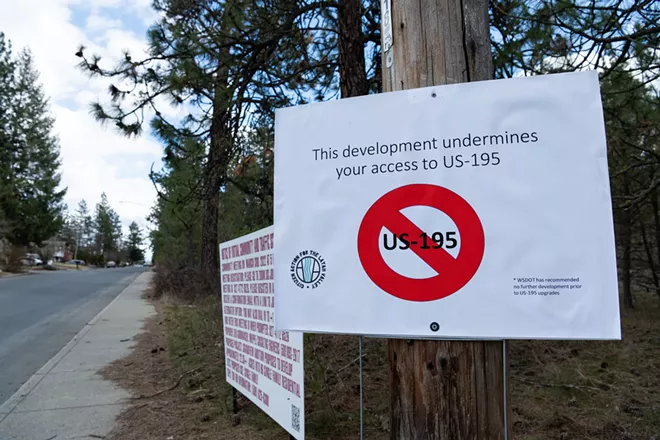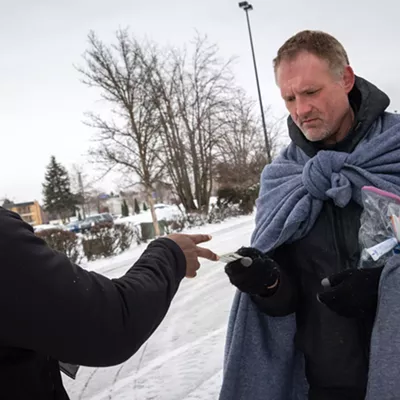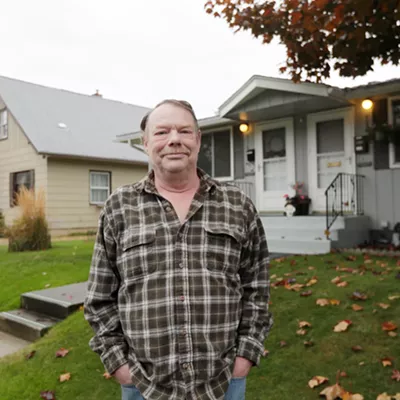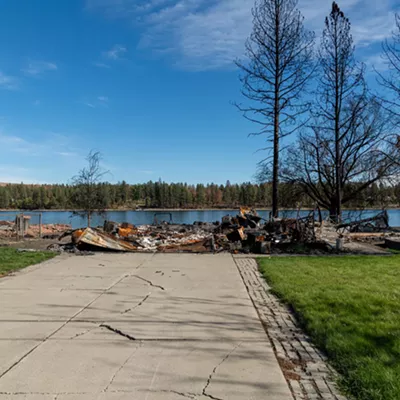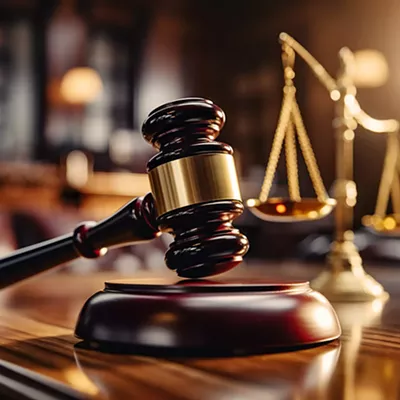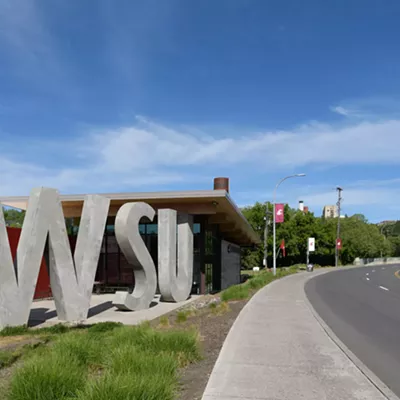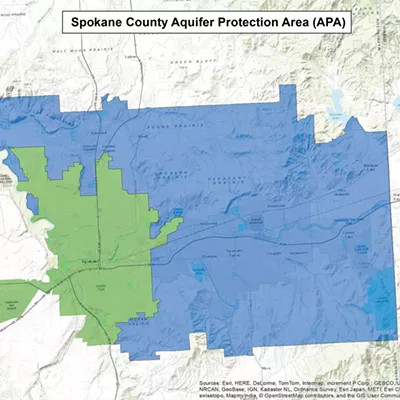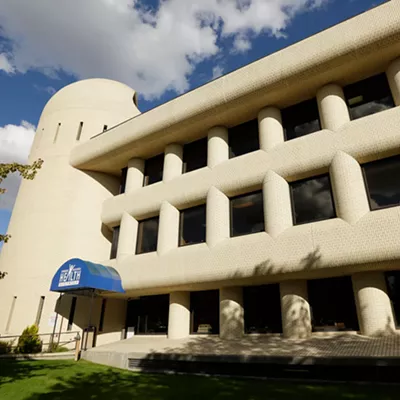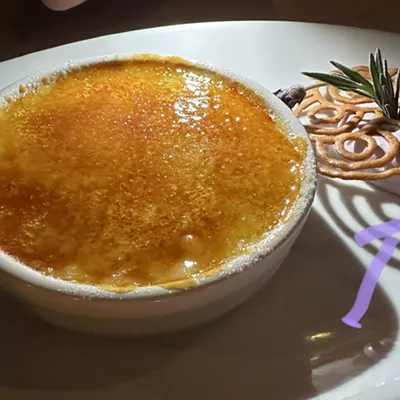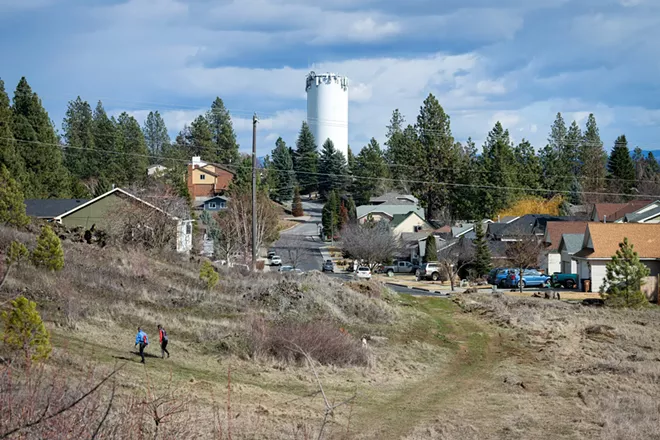
With Inland Northwest housing prices soaring amid limited supply and an inflow of residents during the pandemic, developers are proposing building hundreds of homes along Highway 195, including in areas where similar proposals previously stalled. But neighbors in the area worry their already limited access streets could become overwhelmed with traffic.
They're not alone. The Washington State Department of Transportation (WSDOT) and the city of Spokane have studied the 195 corridor for decades as they've tried to figure out how best to build out the area, which was annexed into city limits in the 1980s.
In fact, WSDOT was so concerned about adding traffic to the interchange at 195 and Interstate 90 that they sent the city a letter in February 2020 warning that the state agency could be forced to limit local access points to 195 if the city didn't build out other streets. In the letter, WSDOT Eastern Region Administrator Mike Gribner asked the city to halt any development near 195 until those improvements are made.
"The fact that the local street network and other appropriate transportation facilities were never constructed from previous comprehensive planning efforts has led us to what can only be described as a crisis in management of safety within the corridor," Gribner wrote.
Gribner tells the Inlander that since then, the city, state and other partners have completed another study and created a list of projects that need to happen in sync with any new home building in order for WSDOT to feel confident about traffic safety.
"There's a lot of people at the same table trying to work through this," Gribner says. "From where we were in 2020 to here, there's been some good change. We know what projects should be built from a transportation point of view."
Still, he says the conversation is ongoing, and the status of 195 access depends on what actually happens as projects seek city permits.
One such project in the process of applying to the city is a 96-home development in the Grandview/Thorpe neighborhood, roughly the area to the west of 195, between I-90 and West Thorpe Road. Residents there could soon have to compete with hundreds of new vehicles on the two main routes out of the hilly neighborhood.
The debate over the Grandview Addition is just one of many in Spokane highlighting the tension between bringing more housing units to a city that badly needs them and residents concerned about how their neighborhoods might change.
"I think our whole rub is you're putting a plot of houses in the middle of an established neighborhood, and it's already stuffed to the gills with what we have," says Candace Smallfoot, who has lived on 21st Avenue in Grandview for more than 25 years. "Getting in and out of this neighborhood is getting to be tricky at best."
GRANDVIEW ADDITION
Smallfoot was one of many who commented at a March 3 community meeting on the proposed Grandview Addition held by Whipple Consulting Engineers. Whipple is helping design the project for developer Toll Brothers, a massive national homebuilding company with multiple projects in the Spokane area. The developers have to give the city a list of neighborhood concerns before submitting an official application, which the firm was working to wrap up this week.
As required by city zoning, the addition bounded by West 17th and 21st avenues and South D and H streets must include four to 10 homes per acre. At 96 homes, it hits the lower end of that range. Most resident concerns centered on traffic, with limited routes in and out of the neighborhood at Sunset Boulevard or Highway 195.
"The traffic issues are horrendous," says Claudia Lobb, a neighbor near the proposed addition. "For the people who live in our area, there is no safe entry onto 195 or I-90."
Over the past five years, there were 27 collisions reported at the intersection with 16th Avenue and U.S. 195, including seven injury accidents with no fatalities, according to WSDOT.
Due to other projects underway, drivers on 16th will soon only be able to turn south onto 195 as they leave the neighborhood, even though many of them need to go north to downtown or other parts of the city. With that change, many could start leaving the neighborhood through the Sunset connections.
"I think it's going to be difficult for them to come up with a plan for the traffic," says Sheila Parpolia, who lives near the current dead end of 21st, which will be connected to Grandview Avenue for easier access to Sunset. "I don't know how they're going to be able to do it."
In an email to City Council members, Parpolia pointed out that other projects could add 215 homes around the same time as these 96. She asked if fire equipment could get in and out quickly enough with all those new cars and wrote, "We are trapped!"
Councilwoman Lori Kinnear says it shouldn't come as a surprise for neighbors that privately owned land in the city could be developed, but the concerns are valid, including how the new homes could impact schools, fire response and public transit (there's currently no bus service there).
"It's a classic case of poor planning way back affecting us now, and we're having to deal with it," Kinnear says. "I get exactly where folks are coming from, feeling trapped in their homes. More homes means more congestion, and a roadway system that can't handle that, and they have no choice."
Parpolia says she was always aware someone could build on the land behind her home, but like others she got used to enjoying the wooded property in recent decades. She often sees wildlife, and knows that once the rocky property is blasted and built out, that will likely change.
Smallfoot and others also worry the neighborhood's culture will change once the new homes go in.
"We just see that whole ambiance of our neighborhood deteriorating as new houses come in here that are slammed together," Smallfoot says.
She and others questioned if the homes, which will most likely be on the higher end for Spokane's market, will help with the housing crisis. They could just attract homebuyers from pricier markets who want to get away from sprawl in their own areas, Smallfoot says.
"I don't know the answer, but I know it's not in our backyard," Smallfoot says.
WHERE THE BUCK STOPS
While WSDOT has made it clear that city streets that run parallel to 195 need to be built out, the agency is ultimately limited when it comes to stopping proposed development, region administrator Gribner says.
WSDOT can weigh in during the permitting process and ask the city's hearing examiner to consider the traffic impacts. Or the agency may take steps to limit access to 195 if safety is at risk, Gribner says.
Kinnear, too, says the council is limited in its ability to prevent a project from moving forward if it meets the standards that are in place under the city's comprehensive plan. One way the city can require developers to help is through traffic impact fees, which City Council was expected to discuss March 24.
"The city doesn't have deep pockets," Kinnear says. "That's why the impact fees are being looked at so the developers will pick up the cost."
Todd Whipple, the president of Whipple Consulting, has worked on land development for 30 years. He says the state's Growth Management Act, which was intended to prevent sprawl and required cities to create comprehensive plans, has made it harder for residents to stop projects they don't approve of.
"As an infill project, it's really hard not to get approved," Whipple says.
Once developers meet specific requirements, there is little recourse other than appealing the project to Superior Court, where it's still likely that a developer is allowed to move forward so long as they complete the steps the city and court require, Whipple says.
Because developers aren't allowed to create sprawl by buying property further outside of the city and annexing it so people can receive services like fire, water, sewer and schools, the only properties left to develop are inside the city. Rockier properties like this one are now coming up for development because easier ones were already built out, he says.
"What growth management did was set up a system where the easily developable property is pretty much gone," Whipple says. "It's not that we woke up one day and said, 'Hey let's go mess with these people.' It's, 'Hey, this land has been available a really long time.'"
The Grandview Addition is still in the early stages, and residents can weigh in more as it goes through permitting.
"We're in the infancy of this project," Whipple says. "We value their input." ♦

